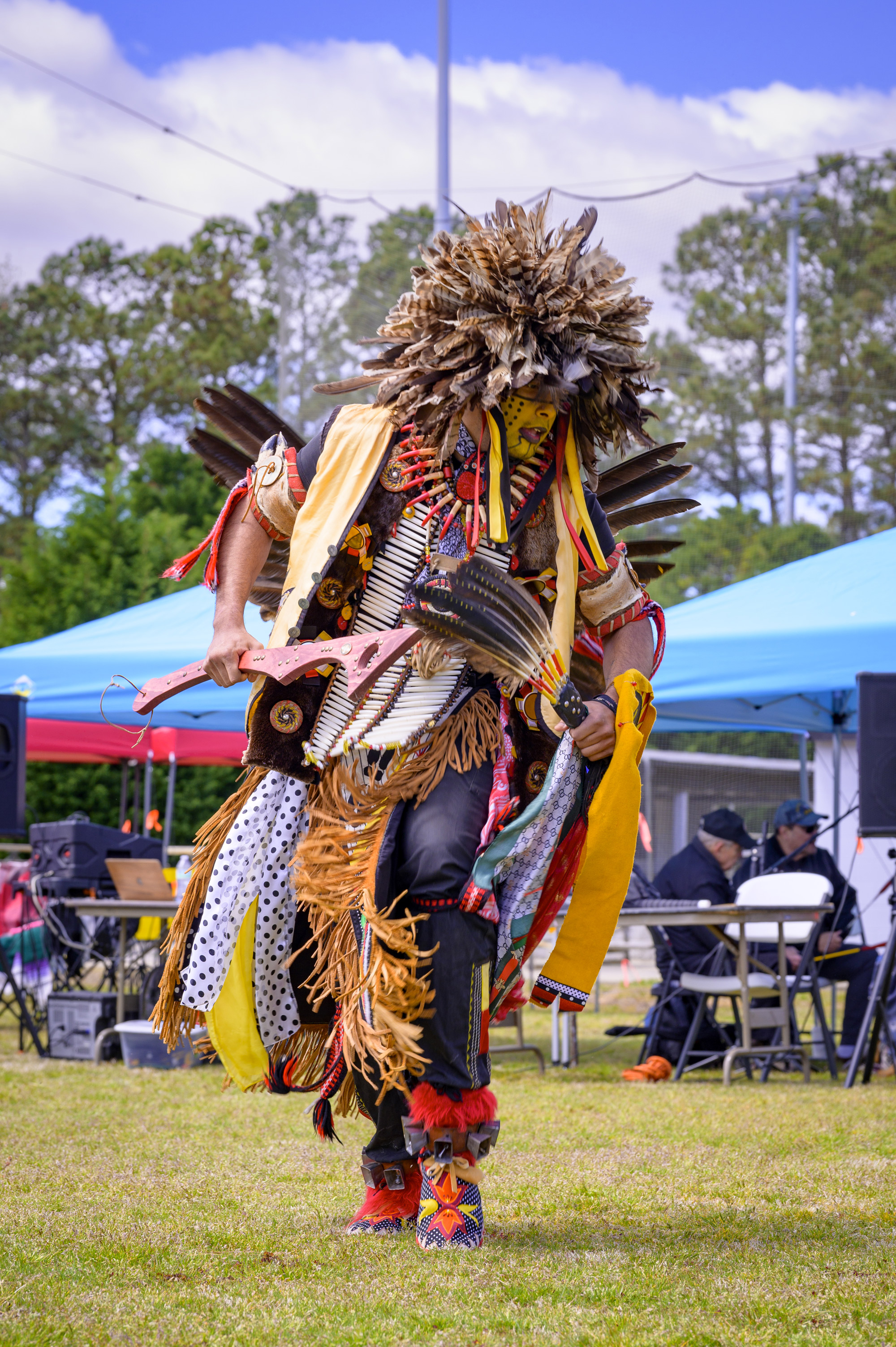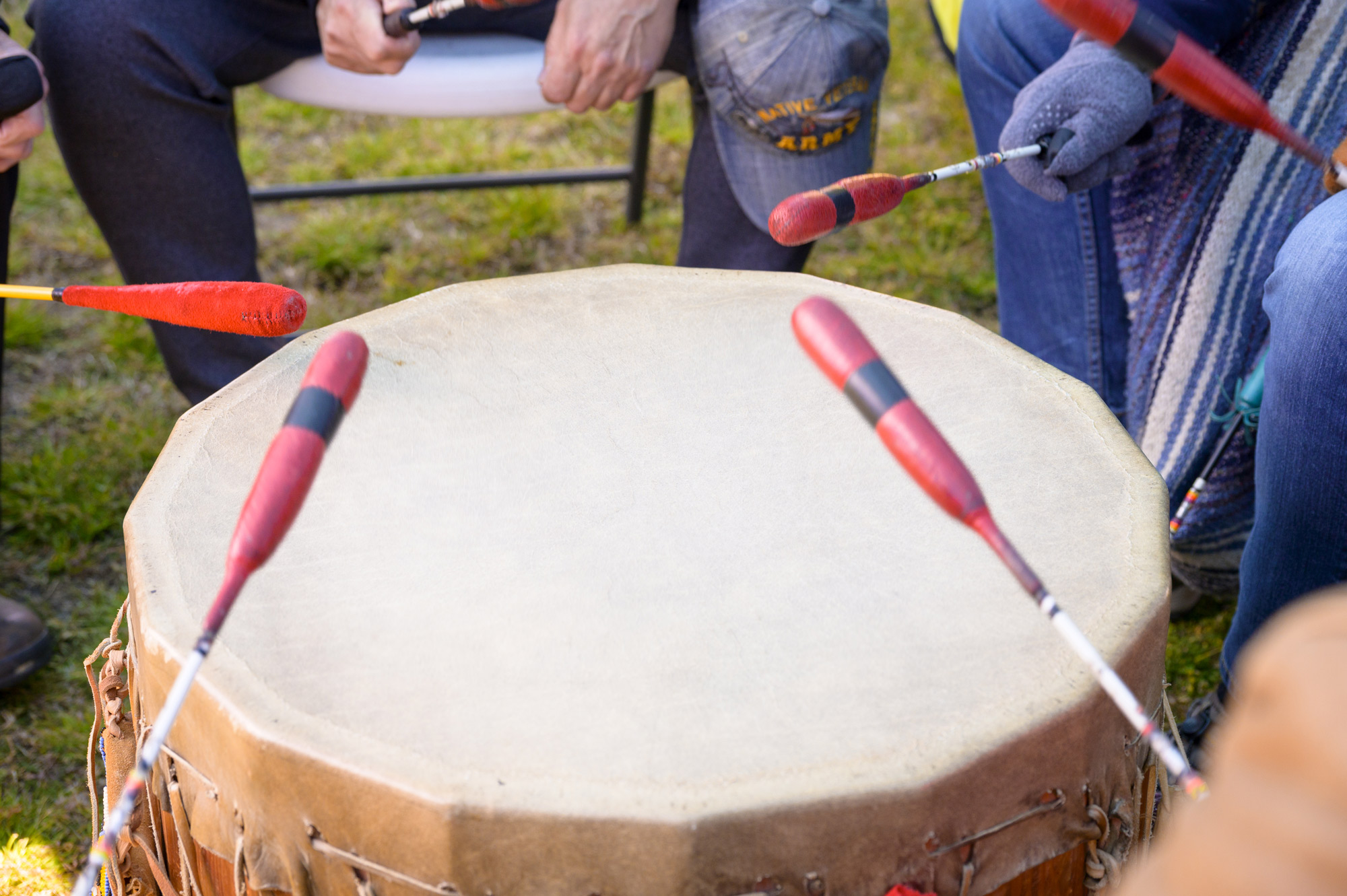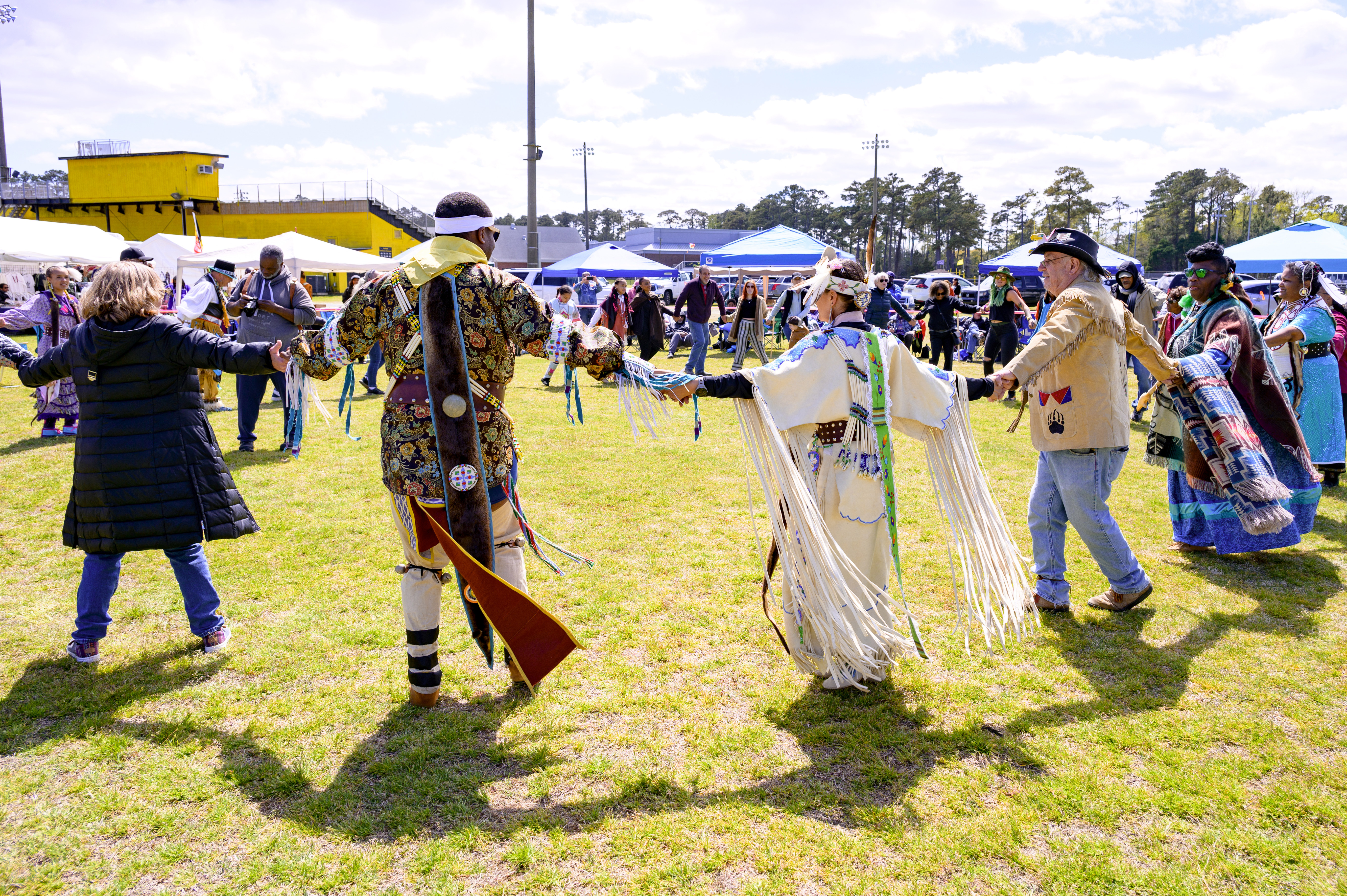Roseate Spoonbill winters on Ocracoke
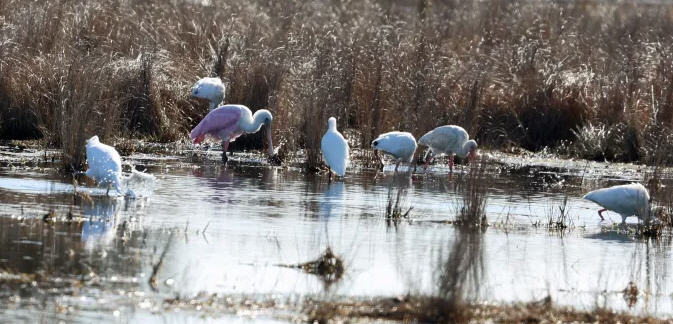
From OcracokeObersver.com
Over the past 10 years, Ocracoke has been a wintering ground for three fascinating bird species. In 2018 a Trumpeter Swan was present for several months and from December 26, 2013, to March 8, 2014, two Snowy Owls were observed from the dunes near the South Point to the airport and eventually, perching on the fence of the pony pasture.
The most recent is a rare (for North Carolina) juvenile Roseate Spoonbill (here called spoonbill) which has achieved celebrity status for islanders, birders, and photographers and became a bit of a social media phenomenon. It was last seen on the island a few days ago and is expected to migrate south.
This bird’s descriptive name derives from its shades of pink feathers and a long bill that broadens and flattens at the tip. In contrast to its beautiful body plumage, by the time it reaches adulthood, the head and nape are unfeathered.
First seen on the island on Jan. 20 in a tidal creek hidden away at the end of Bryant Lane, the spoonbill then started foraging in the wetlands off South Point Road among the many White Ibises and the island’s wintering herons and egrets.
With this bird’s preferred habitat of shallow marshland and secluded sedgeland, the large amount of winter rain has made this an ideal location to observe and photograph from the road without disturbing it.
This pink wader (Platalea ajaja) is one of six spoonbill species worldwide and the only one in the Americas. The other species in Asia, Africa, Europe, and Australia are principally white. In North America, it is a bird of the South, breeding primarily in southern Florida, Louisiana, and Texas. It ranges throughout coastal Mexico, portions of Central, and into South America.
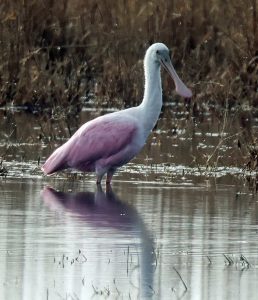
In addition to its colorful plumage and strange-looking bill, it has a fascinating foraging behavior of slow walking and swinging the bill side to side just under the water, feeling for small fish, crustaceans and aquatic insects. The specialized spoon-like bill is equipped with sensitive nerve endings that help the bird detect prey in murky water.
Like so many bird species, the spoonbill has had a remarkable comeback thanks to protection under the Migratory Bird Treaty Act of 1918. But it barely made it.
Its large, beautiful feathers nearly caused its demise going all the way back to the 1830s when John James Audubon saw their wings being sold as fans in St. Augustine, Florida.
Then a fashion craze begun in the 1870s of using feathers to decorate women’s hats became so popular that by the end of the 19th century, it was estimated that millions of birds were being slaughtered a year, propelling the spoonbill to the verge of extinction.
In 1904, Arthur Cleveland Bent, author of the 21-volume work, “Life Histories of North American Birds,” offered a dire forecast: “The Spoonbills will probably be the next to disappear from the list of Florida water birds; they are already much reduced in numbers and restricted in habitat; they are naturally shy and their rookeries are easily broken up. Their plumage makes them attractive marks for the tourist’s gun, and they are killed by the natives for food. But fortunately, their breeding places are remote and almost inaccessible; and through the earnest efforts of the A.O.U. wardens, they are now protected. It is to be hoped that adequate protection in the future will result in the preservation of this unique and interesting species.”
By AOU Bent is referring to the American Ornithologists’ Union founded in 1883 with a mission devoted to the scientific study and conservation of birds. It had a major impact on protecting birds on the verge of extinction and helped pave the way for the creation of the National Audubon Society and what is now the U.S. Fish and Wildlife Service. In 2016, the AOU merged with the Cooper Ornithological Society to form the American Ornithological Society.
The use of wardens Bent mentions turned a tragedy into a cause célèbre.
In 1901, the Florida legislature passed a law crafted by the AOU outlawing the killing of plume birds and approving the use of game wardens to enforce it.
Guy Bradley was hired in 1902 by the AOU to become one of the country’s first game wardens to protect wading birds from hunters.
He patrolled a vast area stretching from Florida’s west coast, through the Everglades, to Key West. In 1905, he was shot and killed while he was attempting to stop three poachers shooting birds in a rookery near Flamingo, at the very bottom of the Everglades. The story made national news drawing attention to the crisis and outrage ensued when the defendants were found not guilty.

In 1910, the New York legislature passed the Audubon Plumage Act, prohibiting the sale or possession of feathers from protected bird species. Other states soon passed similar protective laws.
In 1942, there were fewer than 30 pairs breeding in Florida
But by 1978, they had increased to 1,400 pairs in Southern Florida Bay and the Everglades
The legislative impact along with social opprobrium made decorative bird feathers unfashionable. The slaughter of rookeries ended in 1918 with the Migratory Bird Treaty Act.
Thereafter, recovery for the spoonbill was slow. Progress was hampered by extensive draining and ditching of the Everglades that destroyed their habitat. A profile of the bird in 1942 by Robert P. Allen revealed that there were fewer than 30 pairs breeding in Florida.
But by 1978, a study of the Southern Florida Bay and Everglades by William B. Robertson Jr. and others showed that spoonbills had increased to 1,400 pairs. No hunting, habitat restoration, and fresh water-level management all helped the return of spoonbills and other wildlife.
Spoonbill population numbers have exponentially increased over the past several decades. The current Partners in Flight avian database estimates that there are 170,000 individuals worldwide.
Spoonbill presence in areas depends on adequate prey and suitable water levels, both of which seemed suitable on Ocracoke this winter.

Elsewhere, some historical habitats are no longer as viable for them.
“The spoonbills are now abandoning Florida Bay for the Everglades and points north,” said Jerry Lorenz, director of research for Audubon Florida. “They are no longer foraging there due to sea-level rise; the water is too deep.”
After spoonbills fledge, they disperse over a wide range and these days more are heading in the fall to South and North Carolina.
This is not the first time a spoonbill has been seen on Ocracoke. In October of 2021, three were seen briefly in the South Point area and a few days later one was photographed by Karen Rhodes perching in a tree on the sound side of the island.
Spoonbills are mostly silent outside of their nesting times. Their on-territory vocals are not those of a songbird, but more like gruff squawks.
These days, when I hear the blues song “Spoonful,” written by Willie Dixon and wonderfully performed in a raucous tone by Howlin’ Wolf, I hear the refrain as “That’s Spoon, that’s spoon, that’s spoonbill.”

To counter that bluesy and raucous association is a recollection of having been in Flamingo, Florida, many years ago, listening to the sound of the gentle flapping wings of large spoonbill flocks flying overhead at dusk to their roosting sites.
More than one person has opined that sound is one of the most beautiful in nature.
Peter Vankevich is co-publisher of the Ocracoke Observer and host of “What’s Happening on Ocracoke” on WOVV, Ocracoke’s community radio station.”















